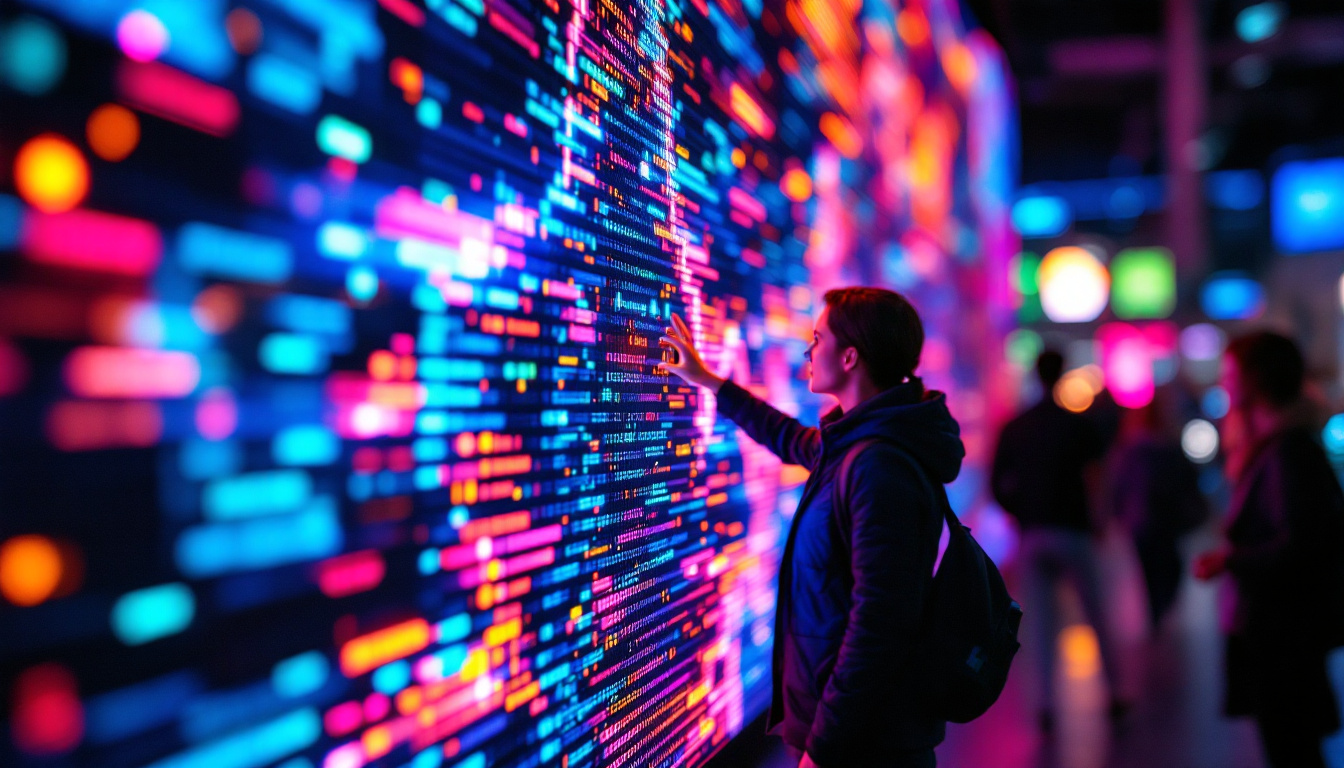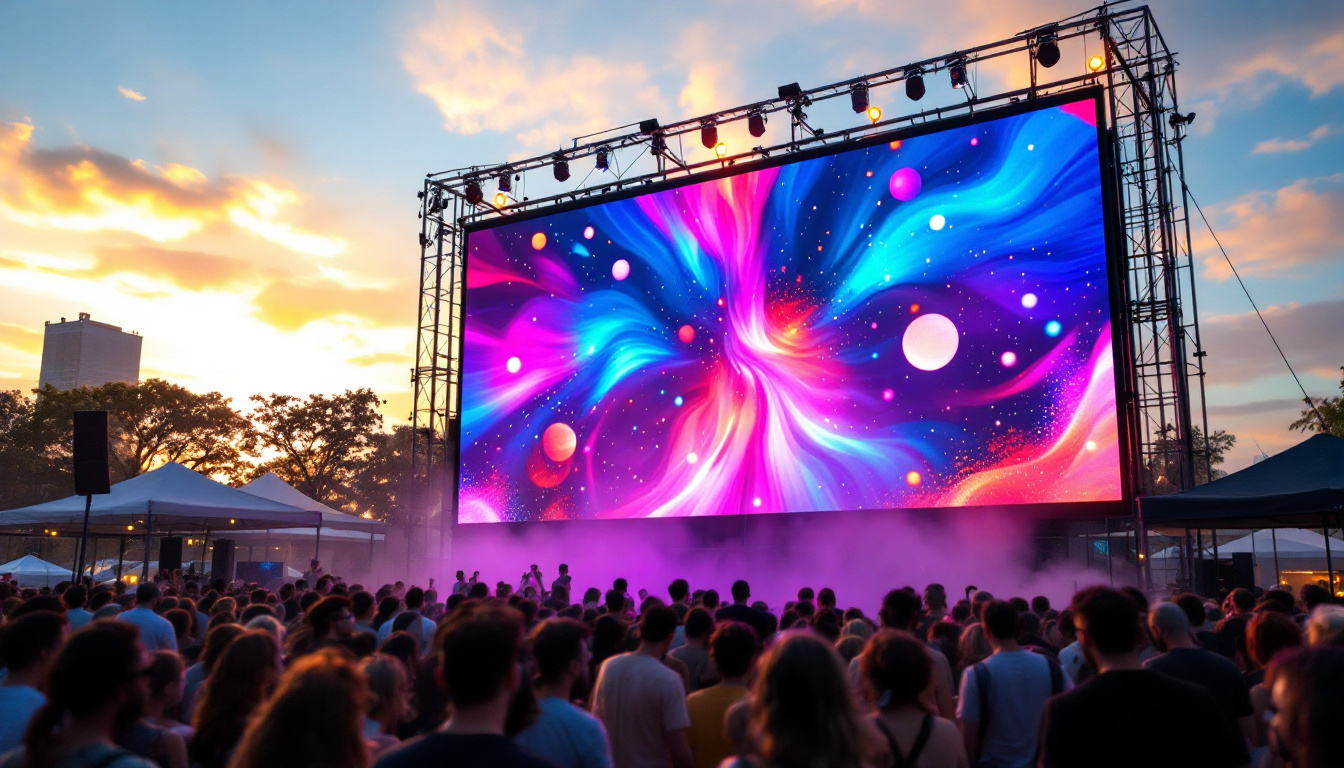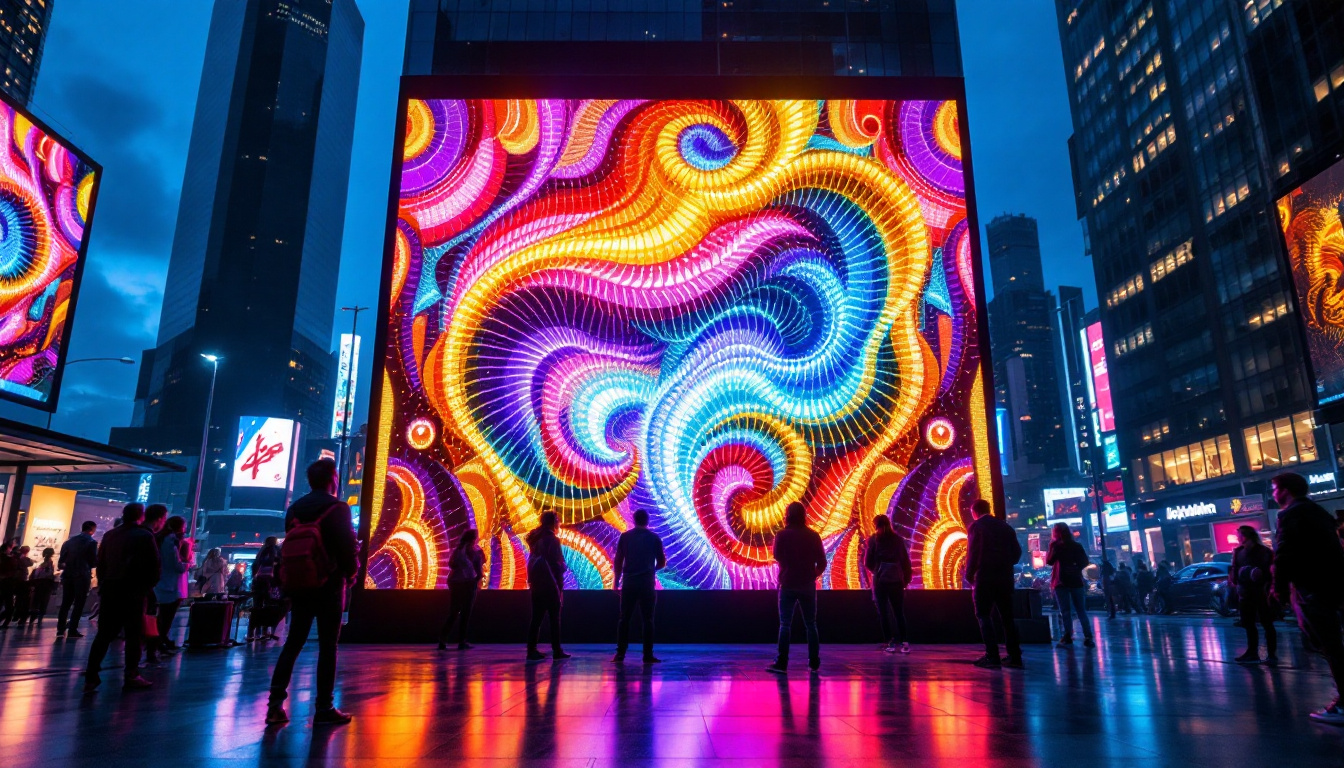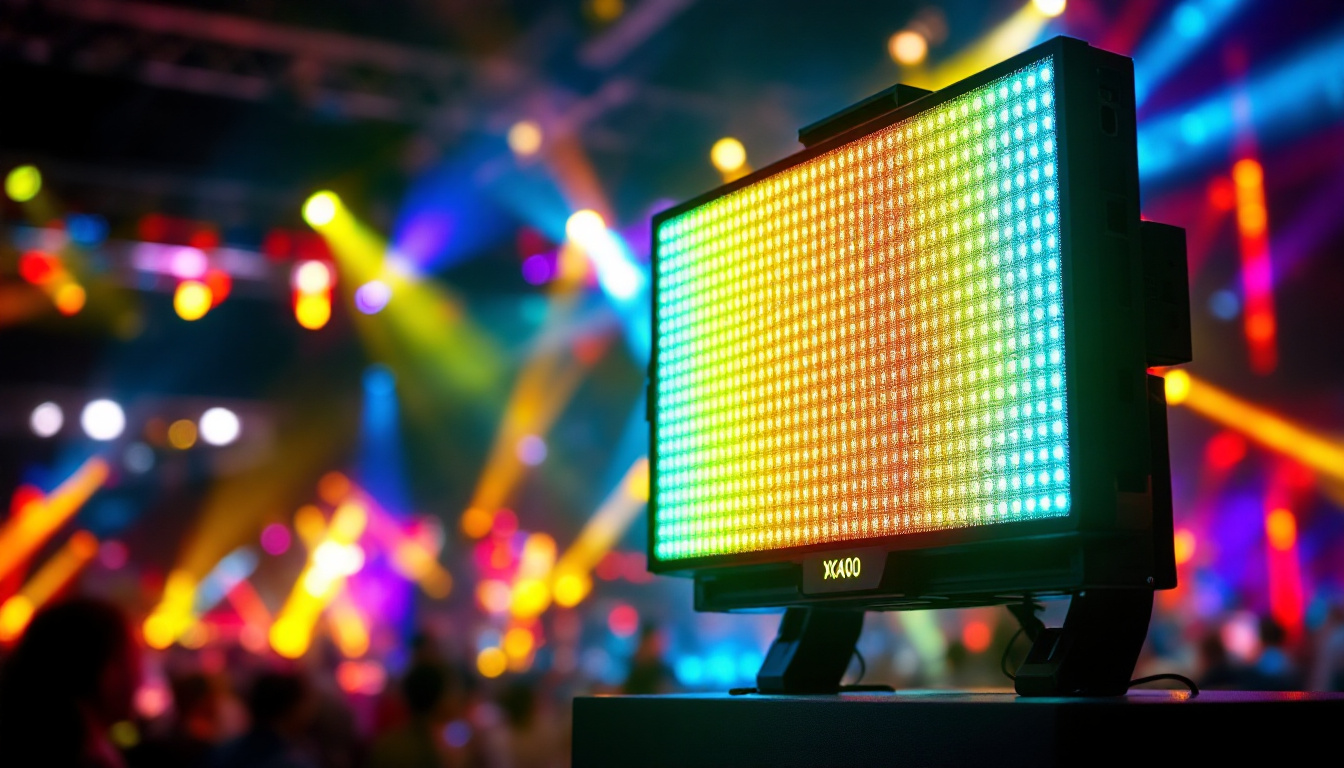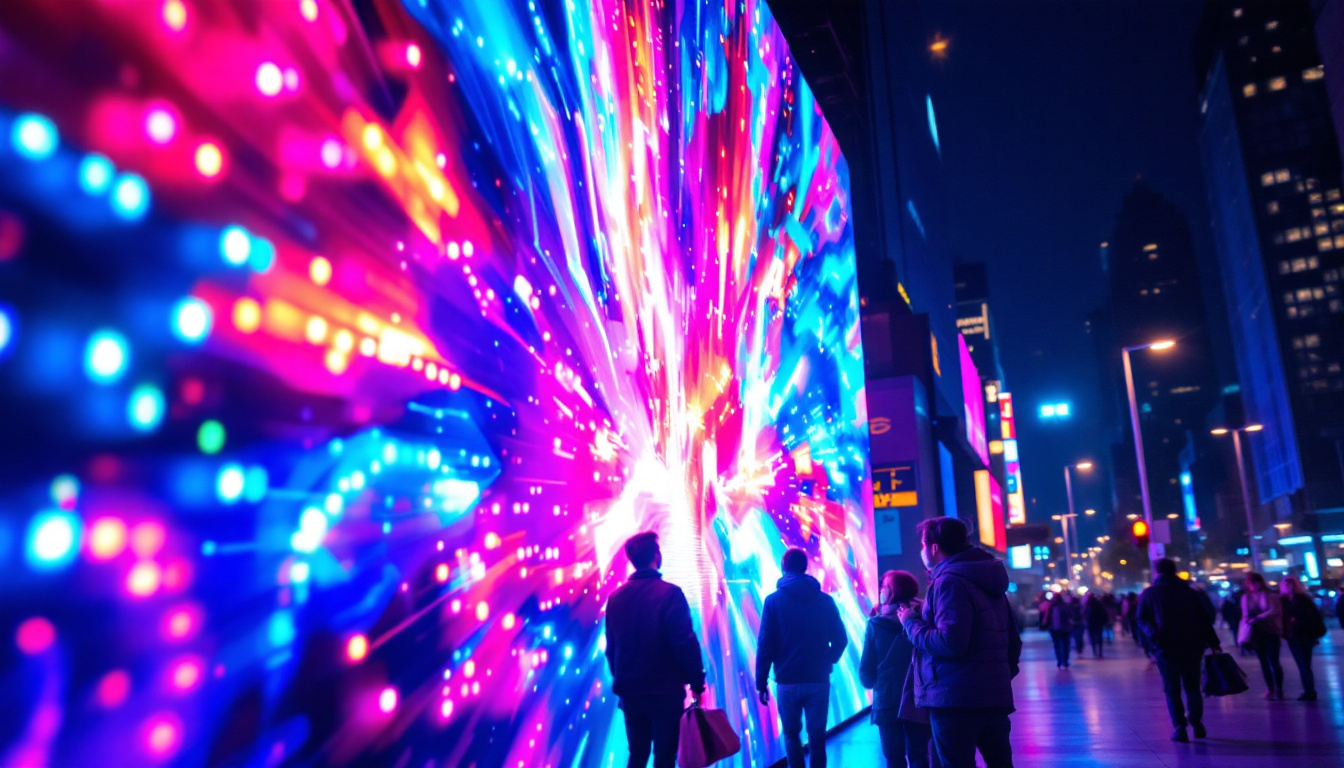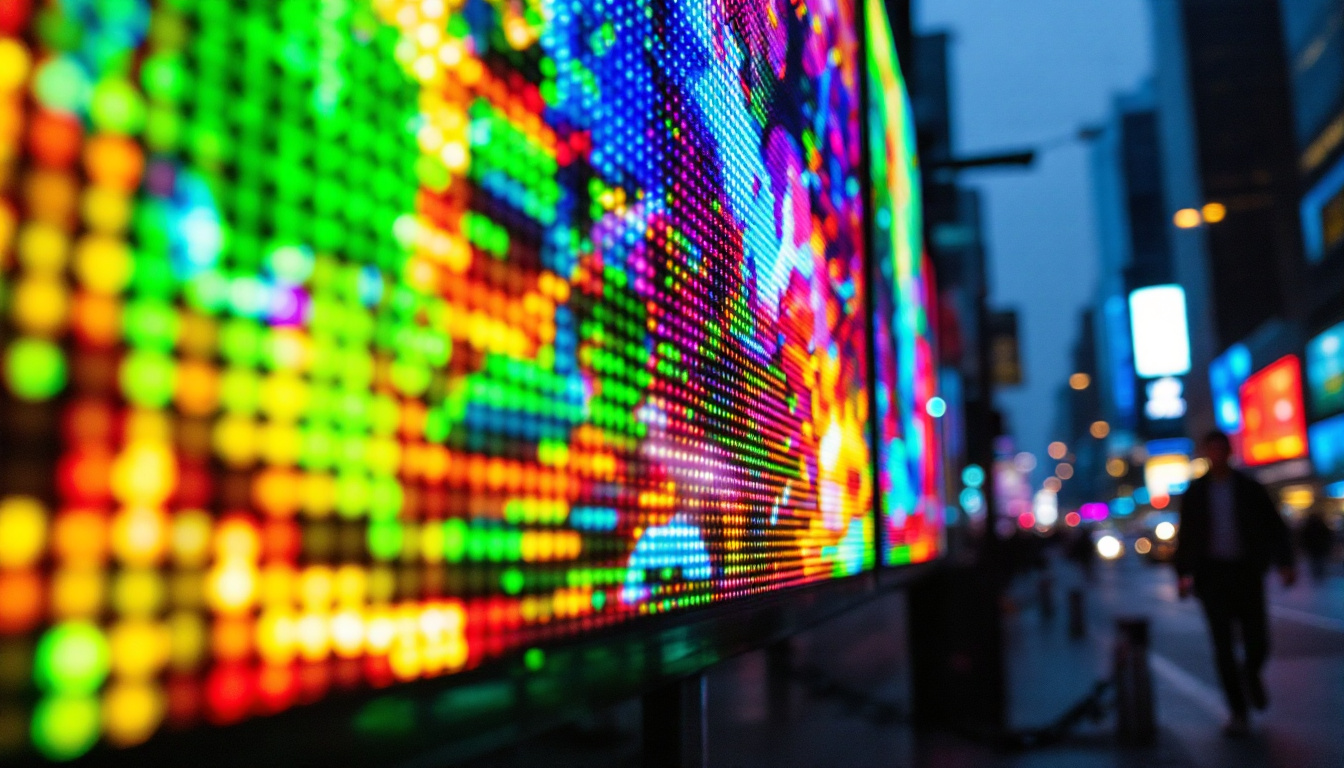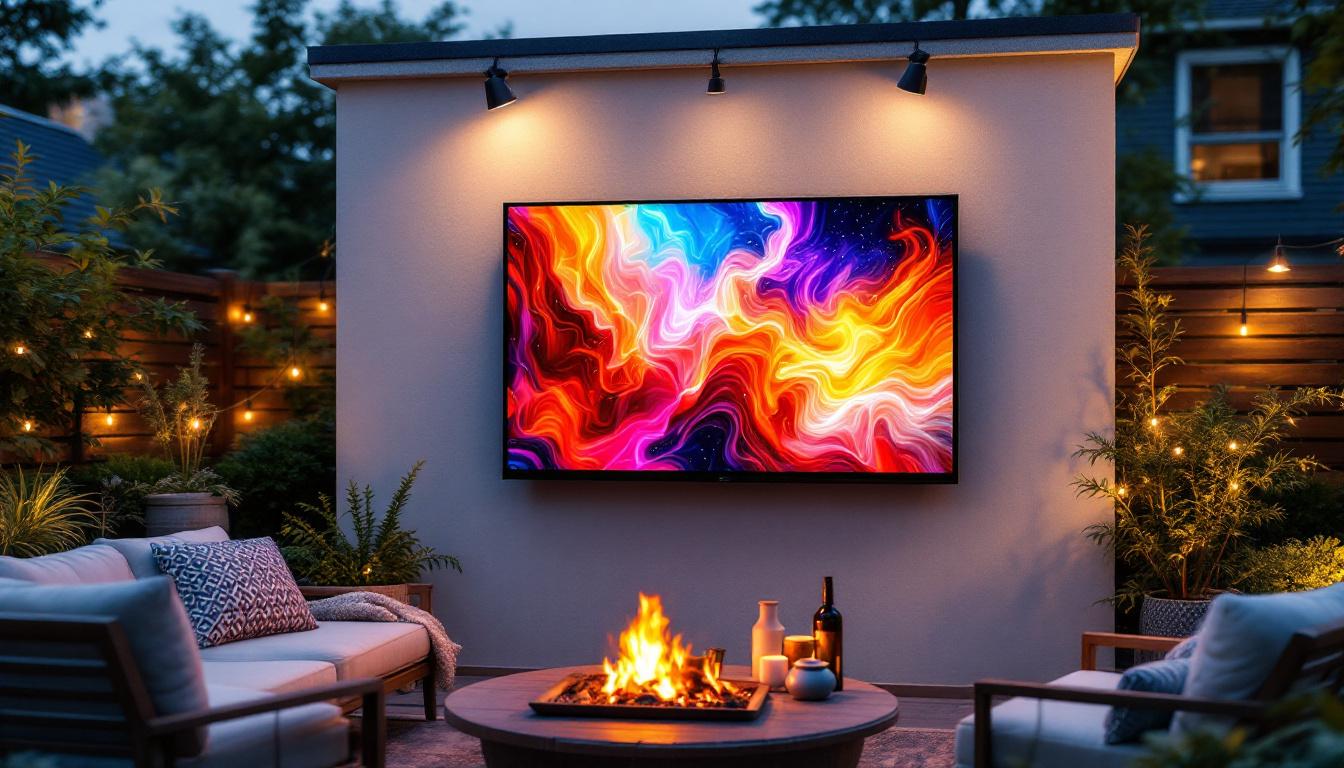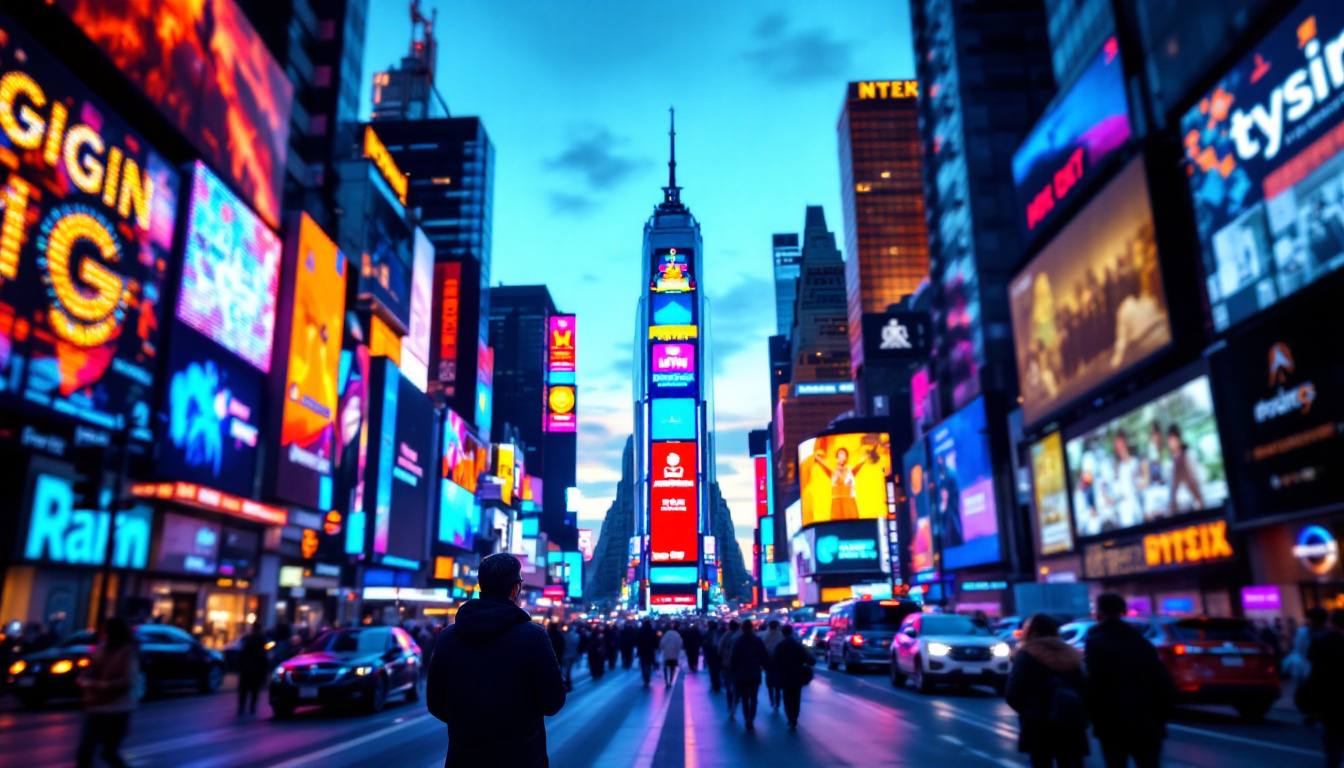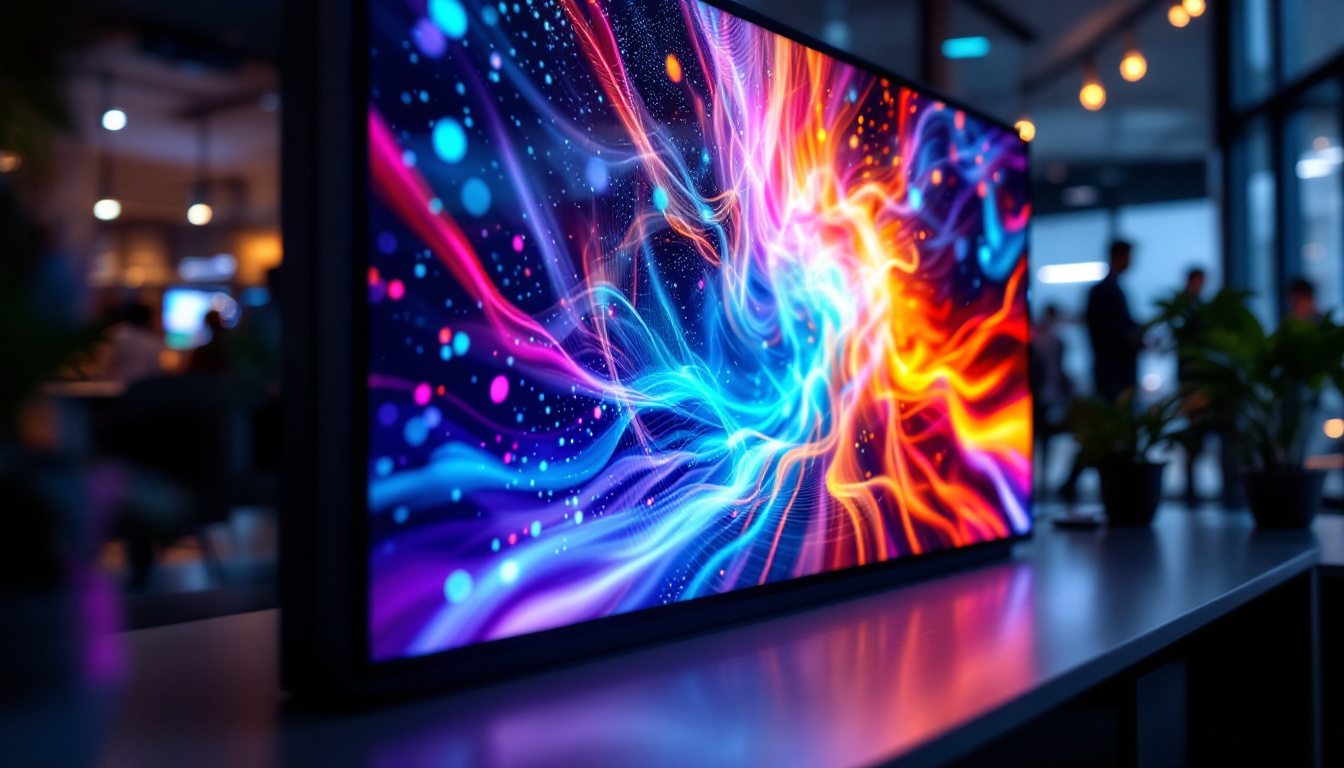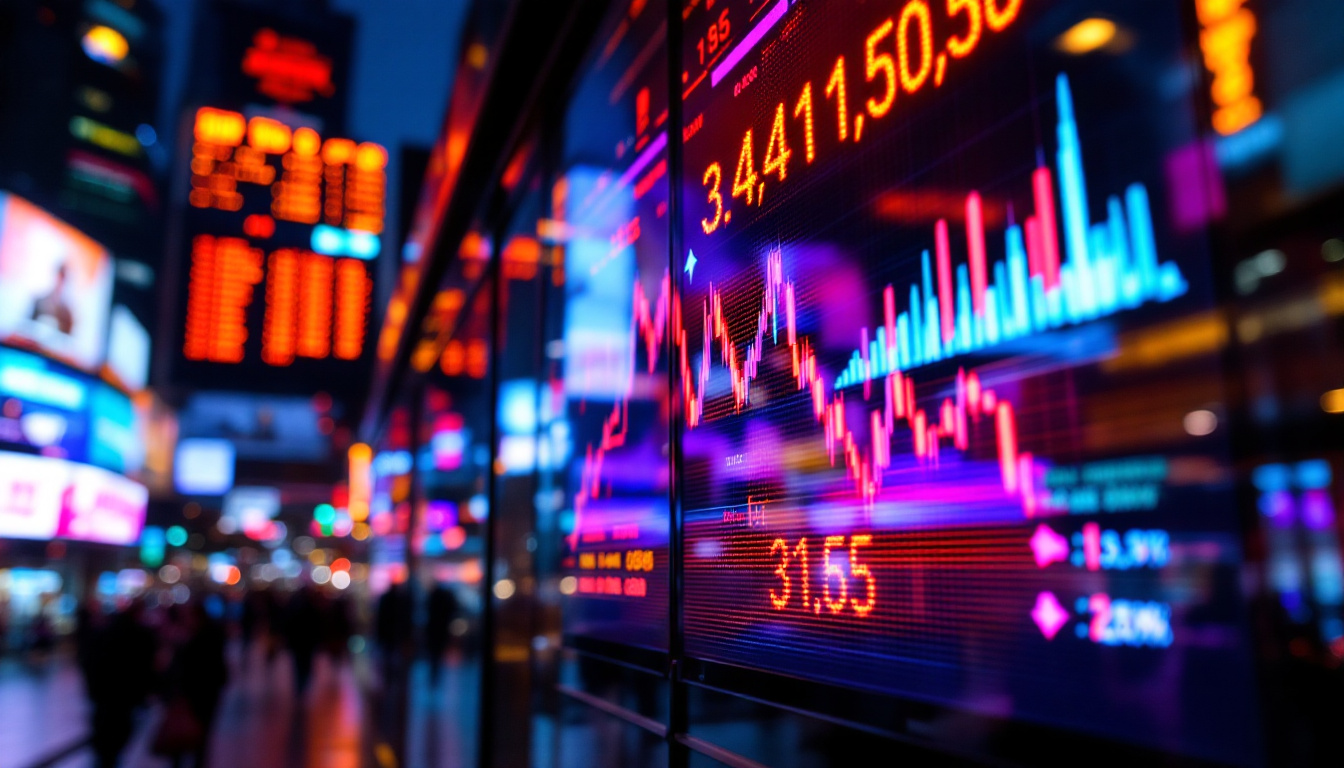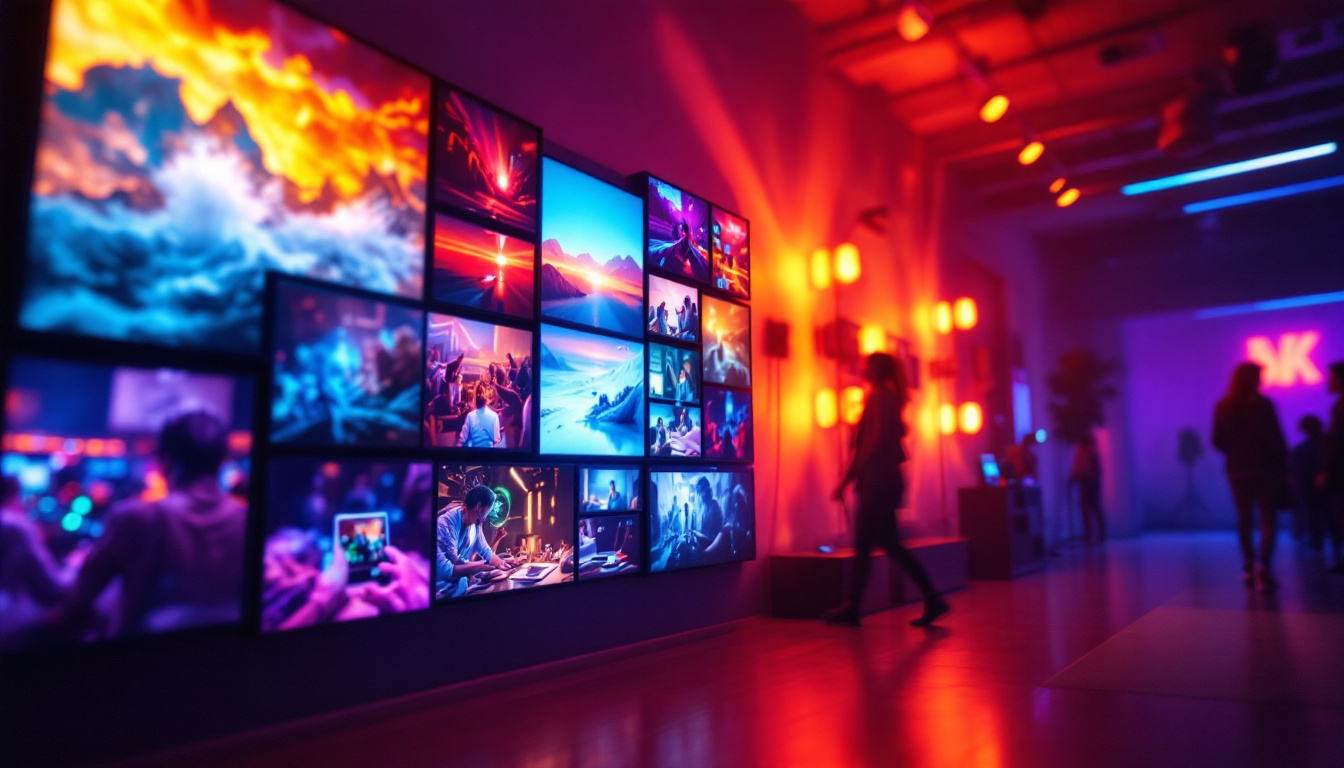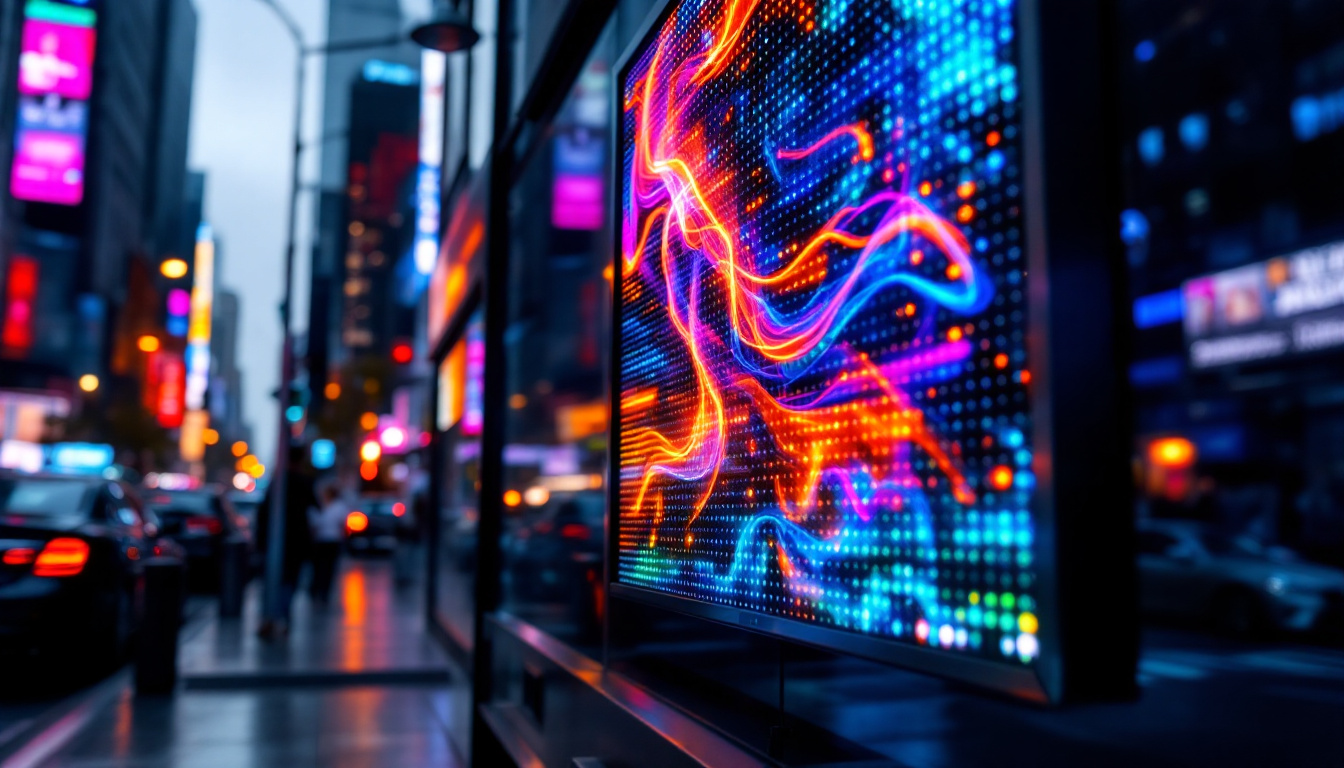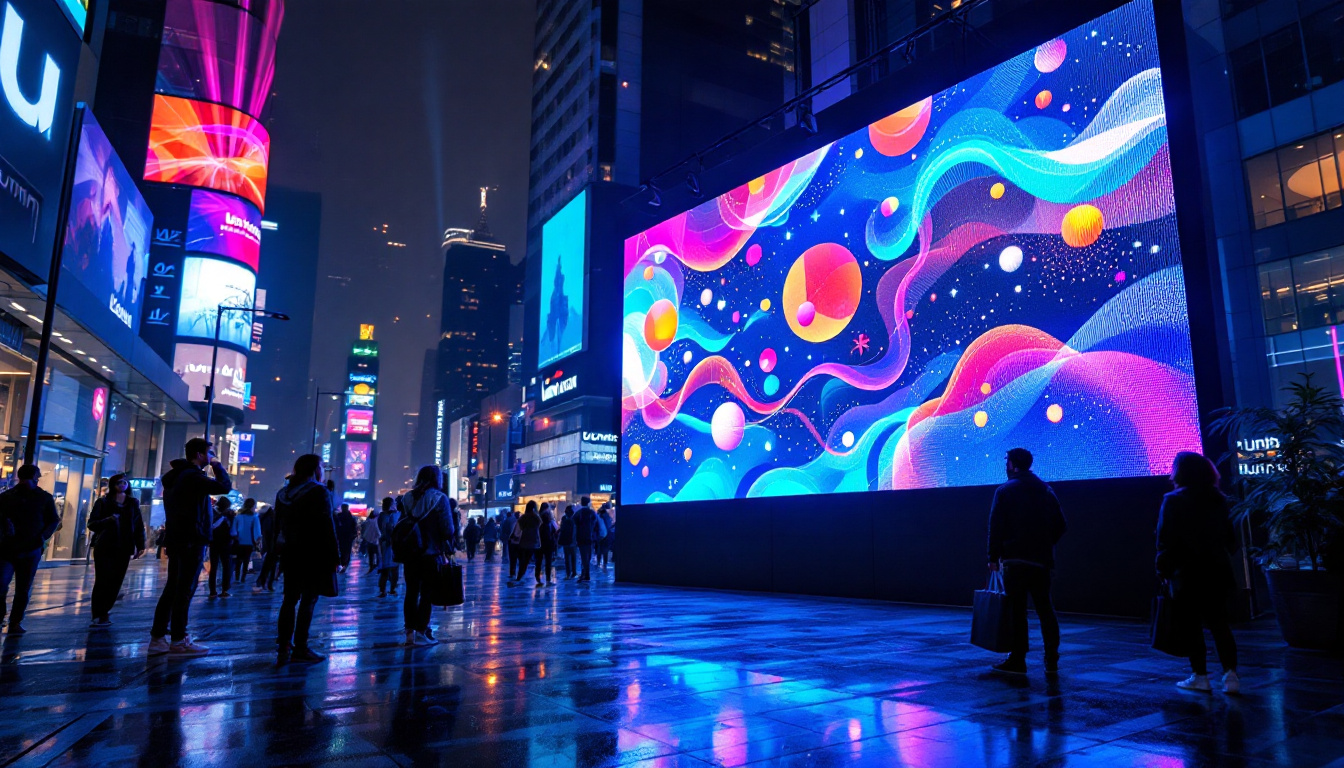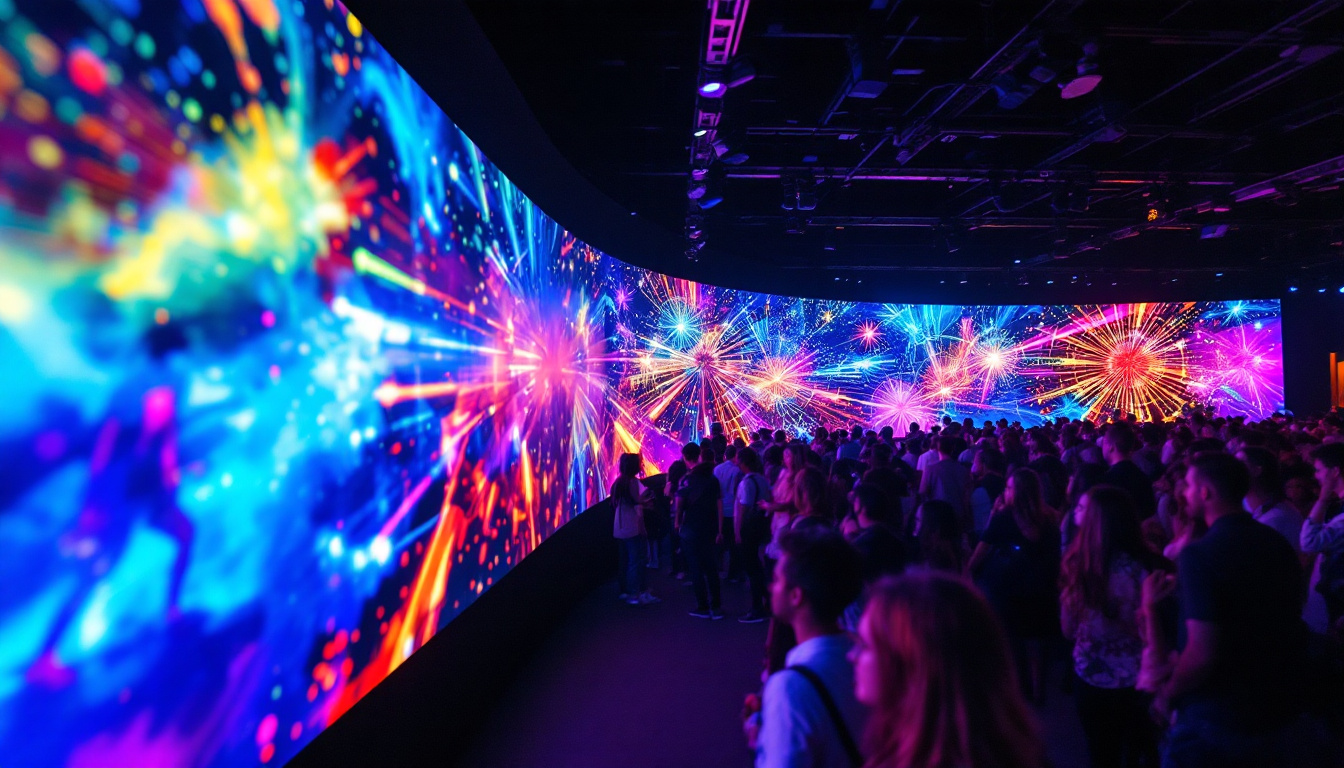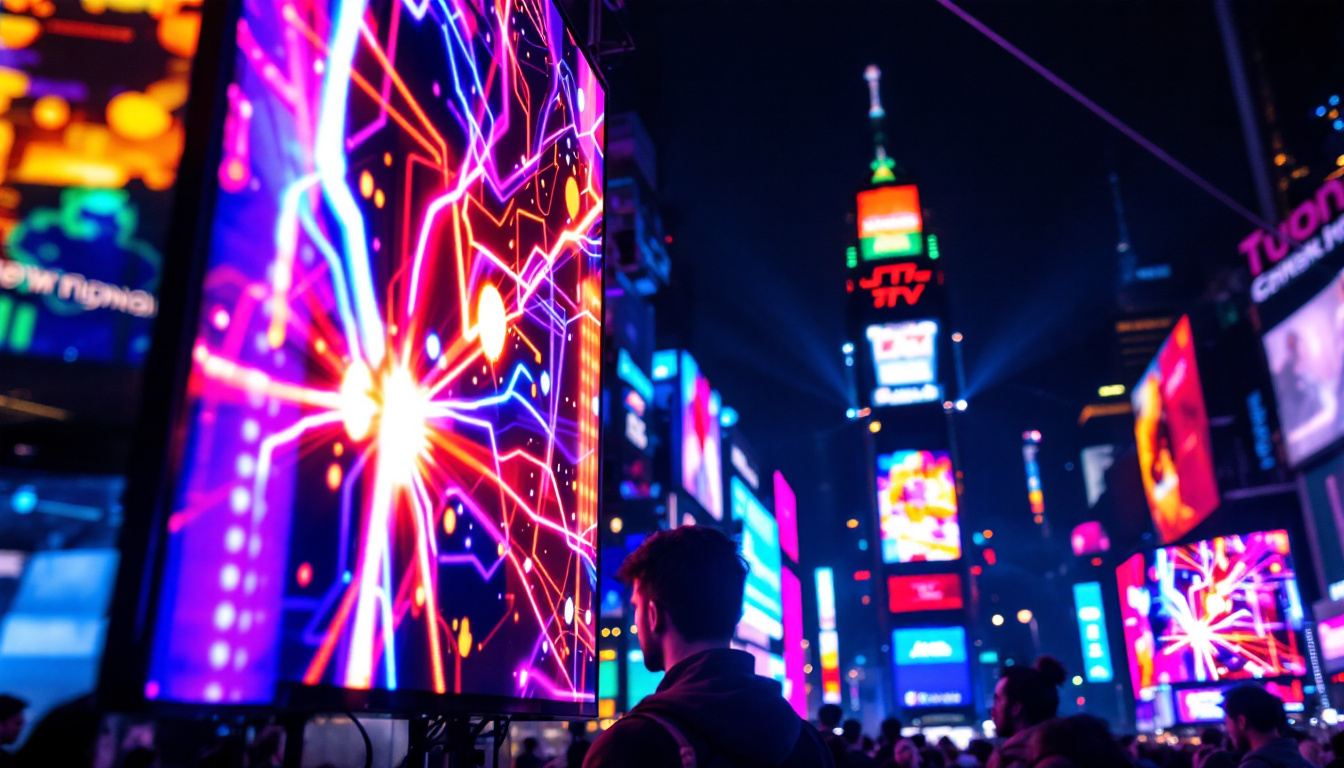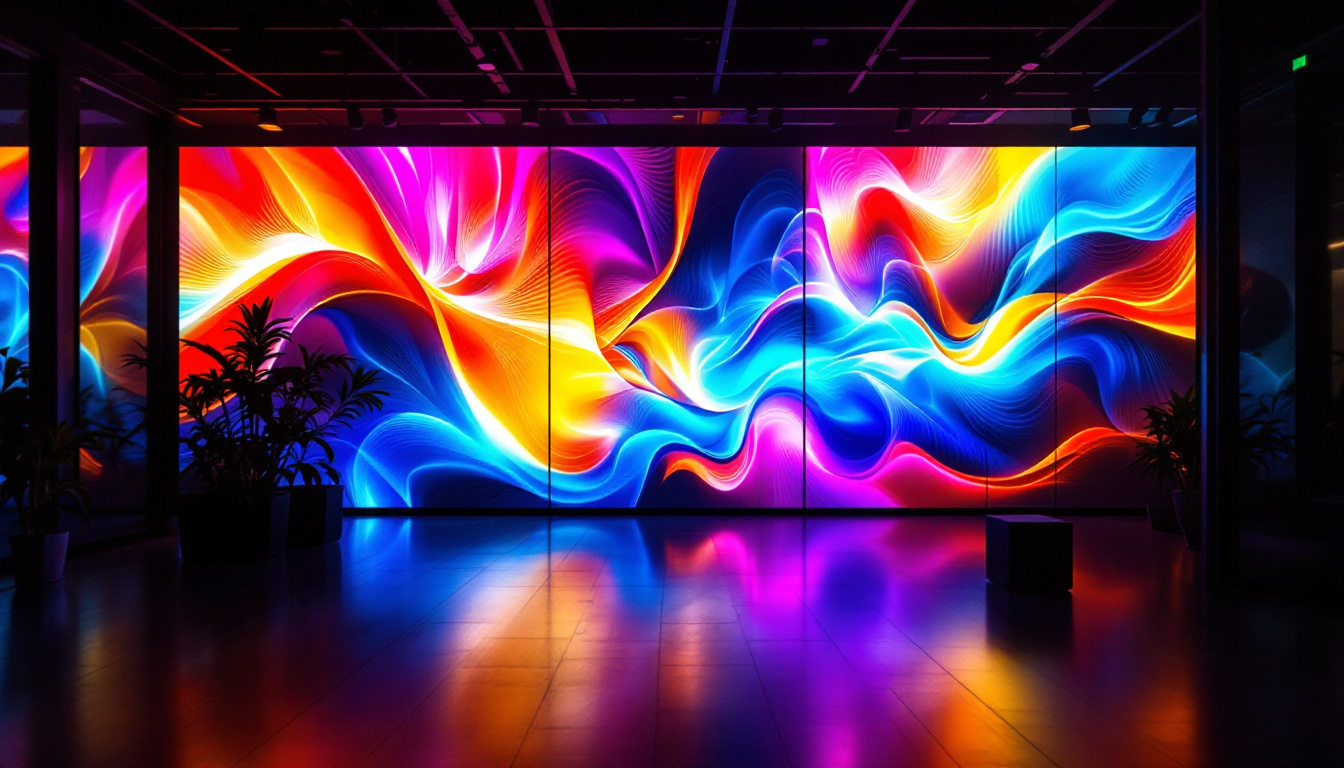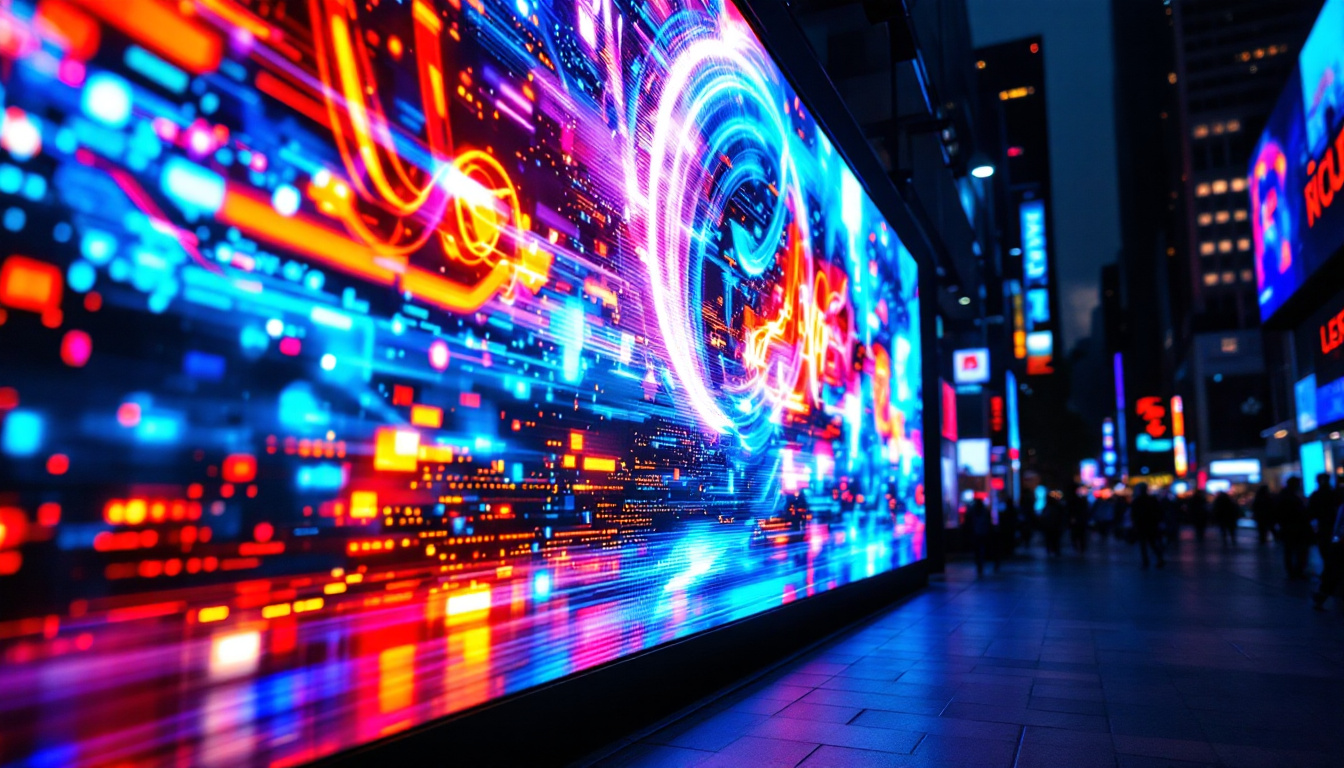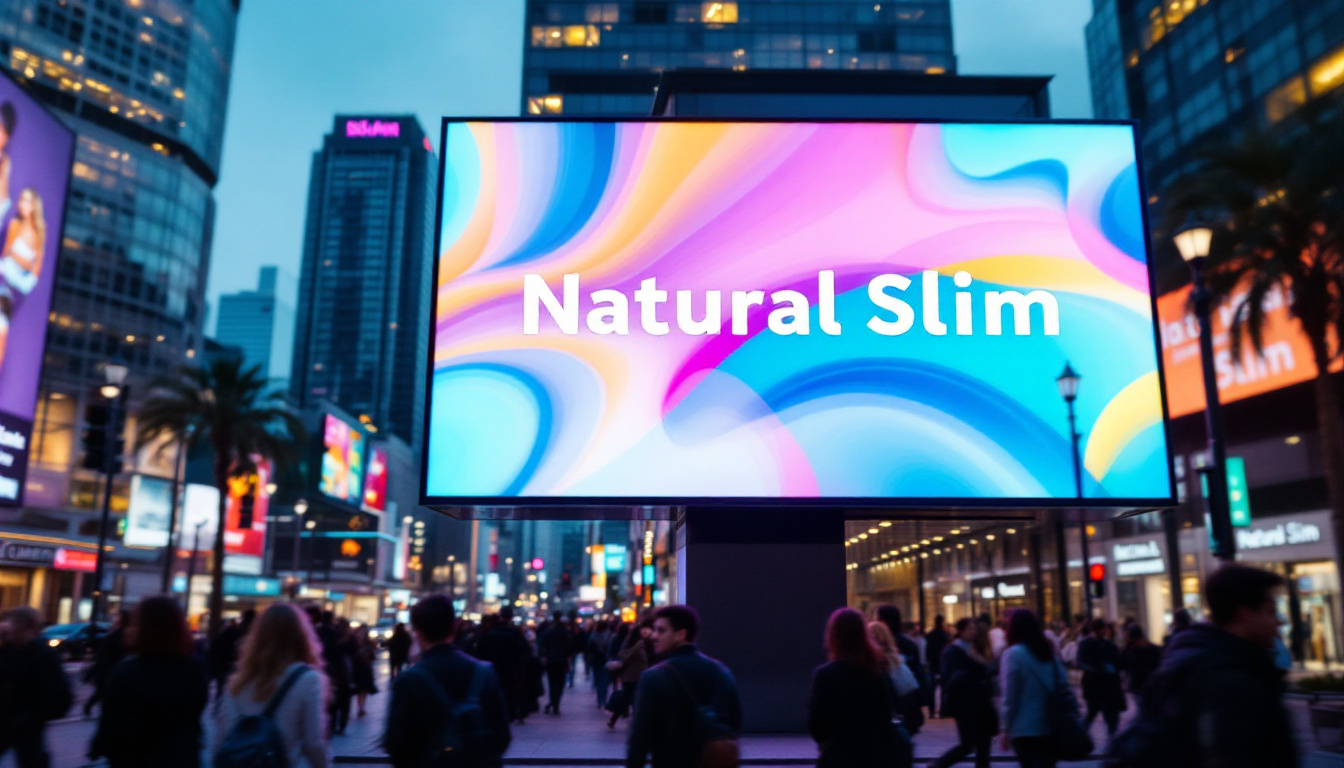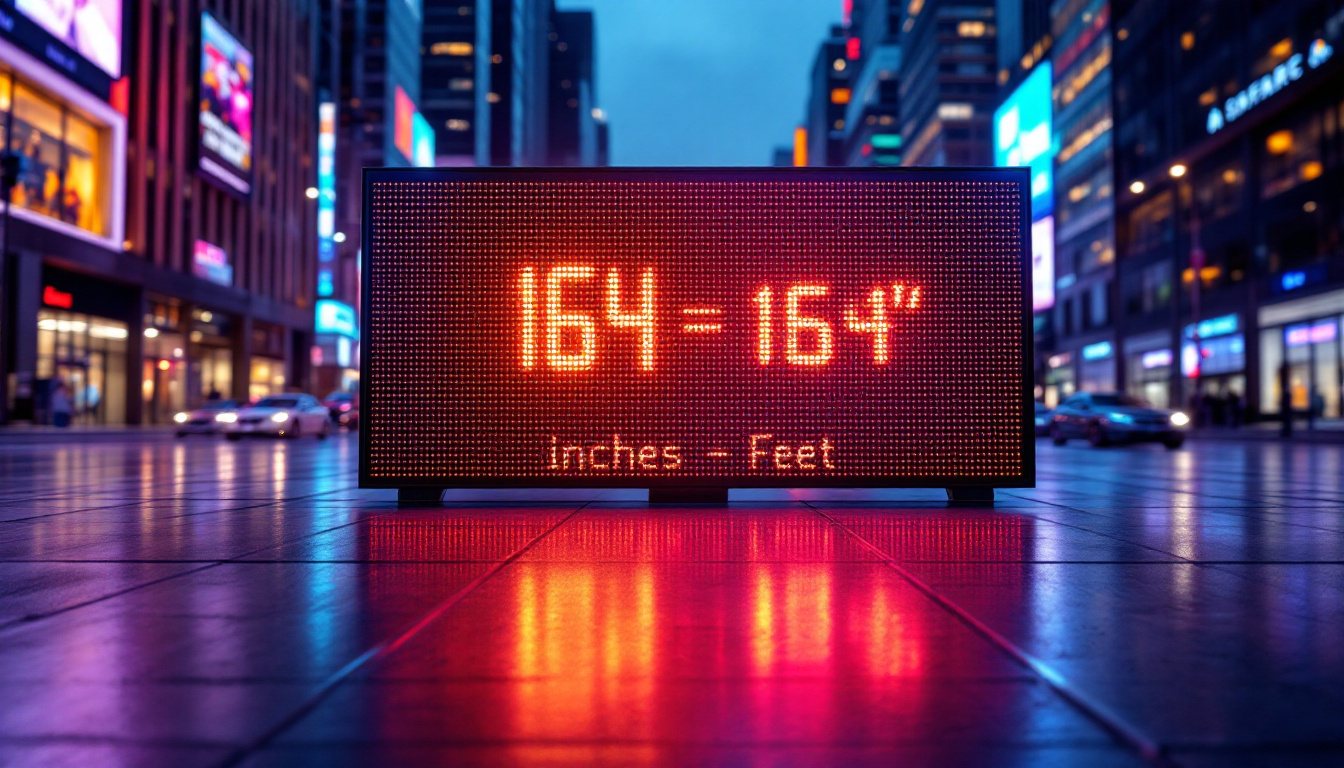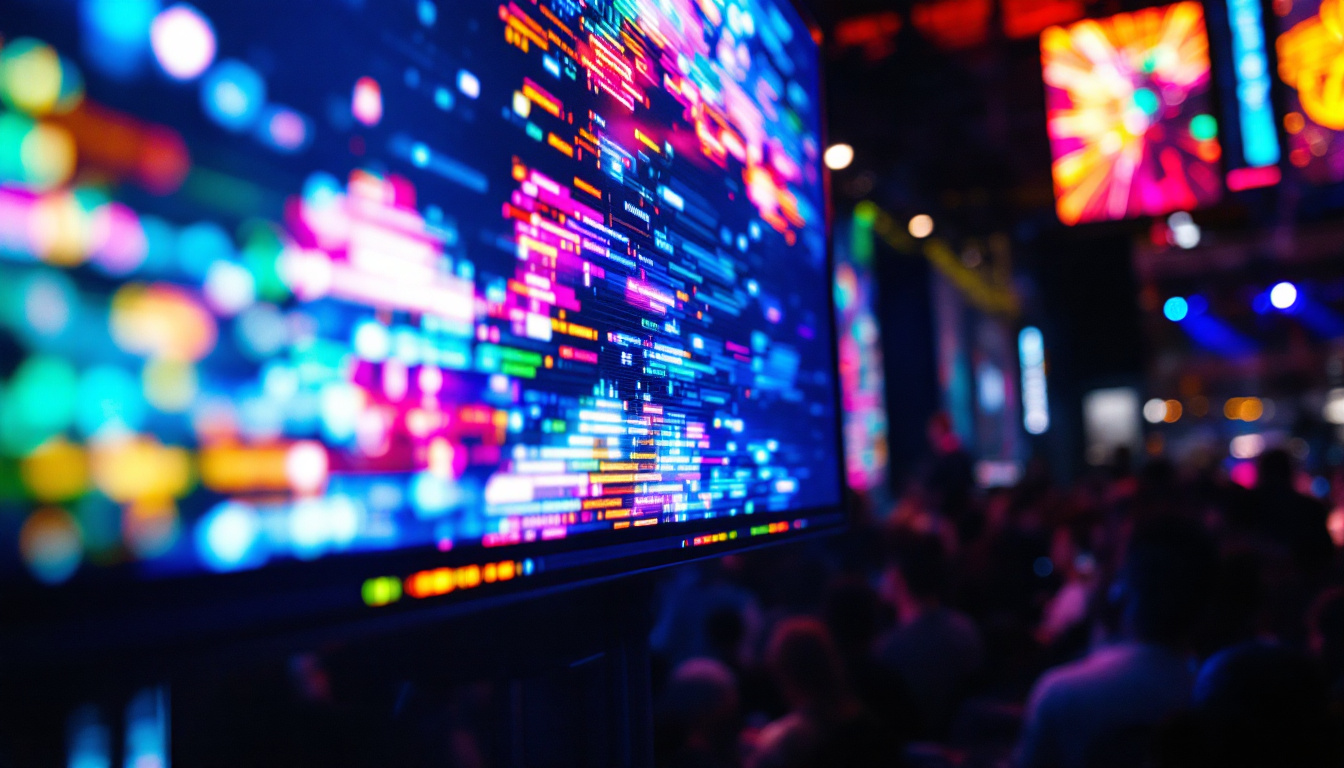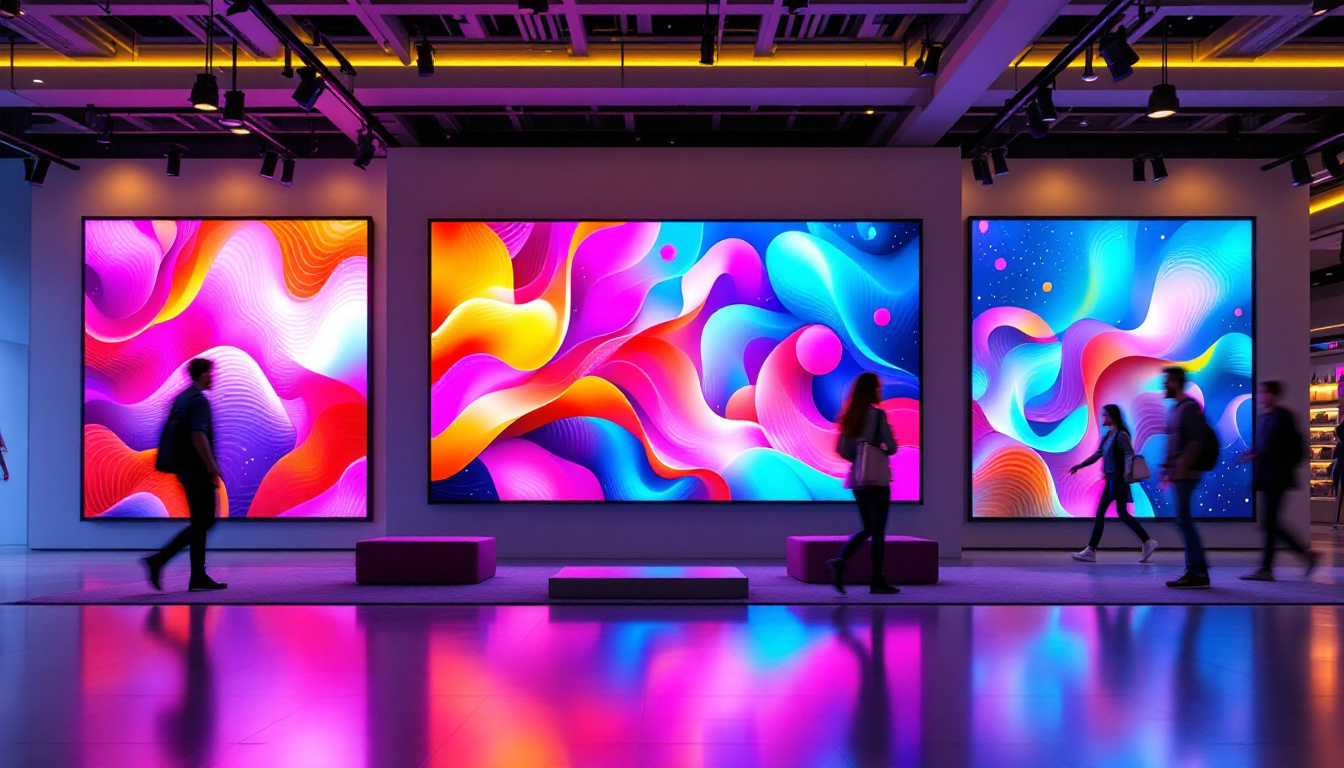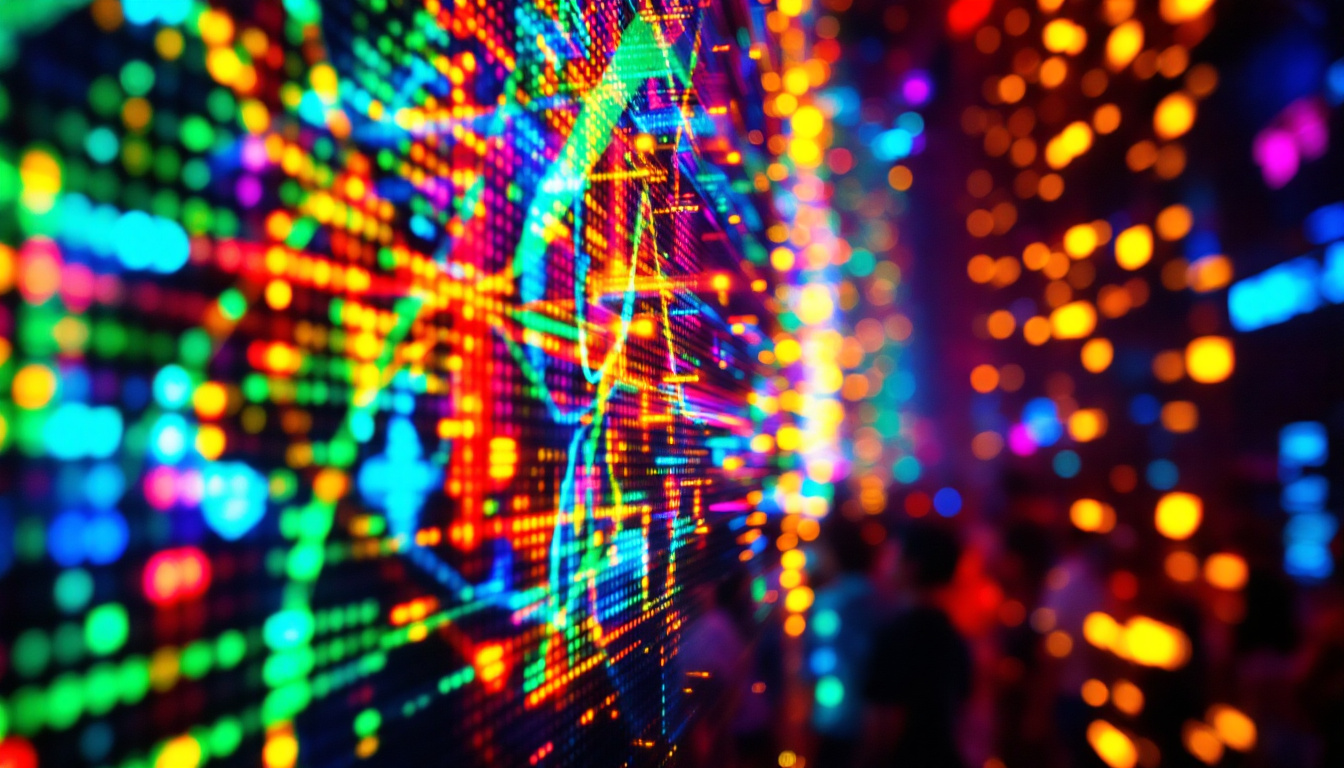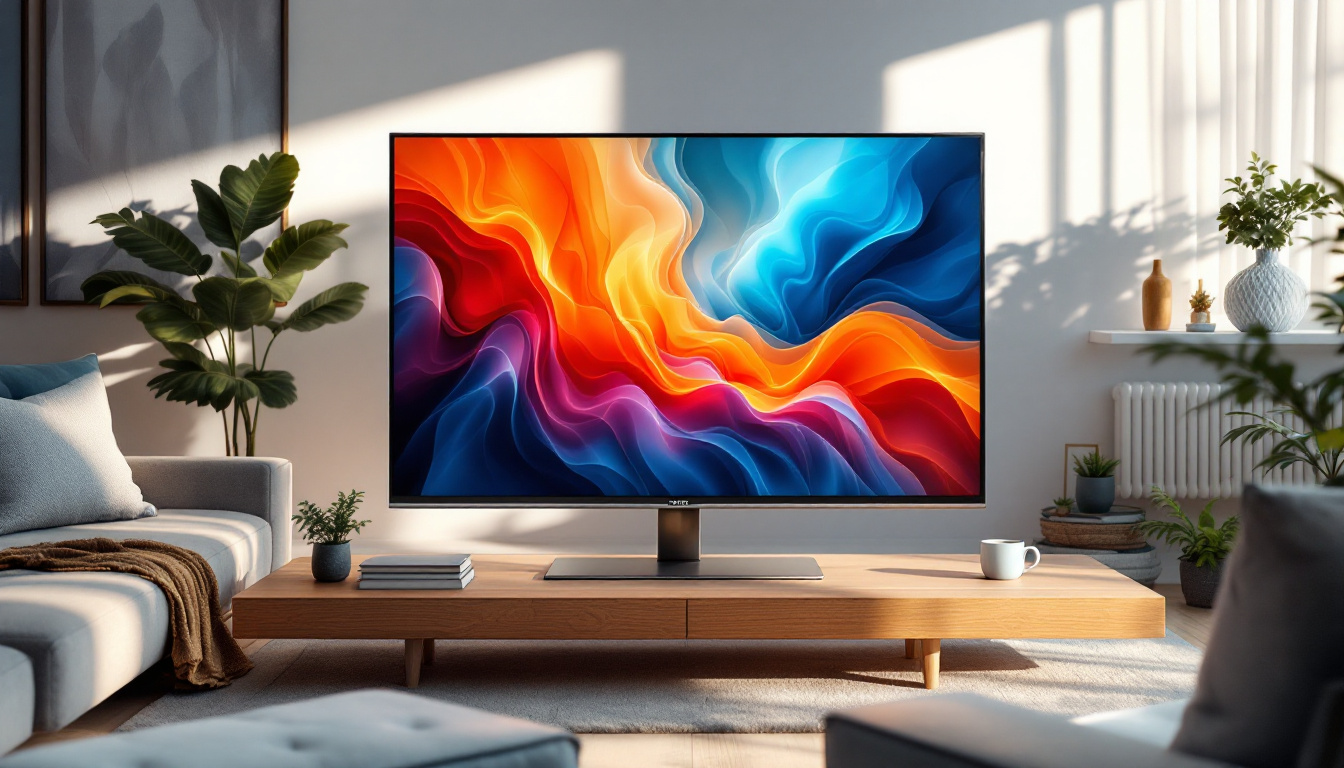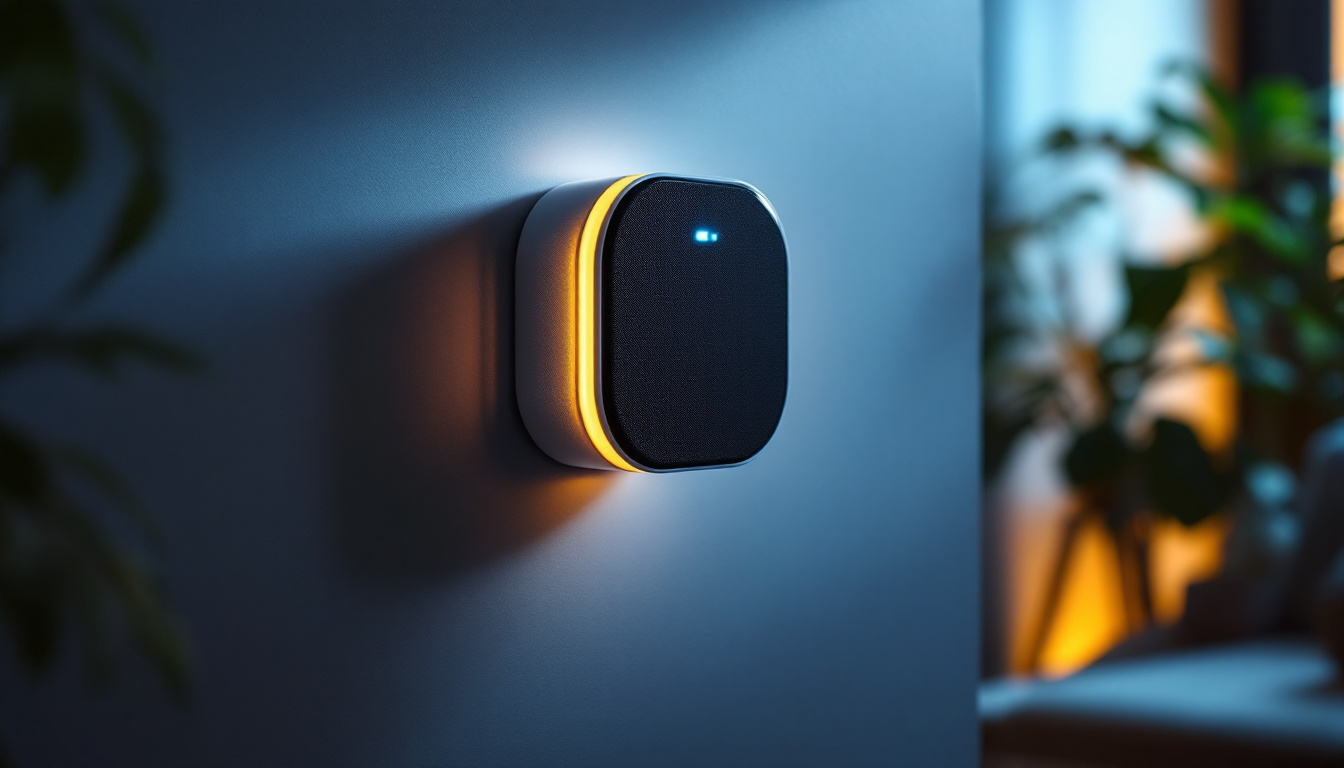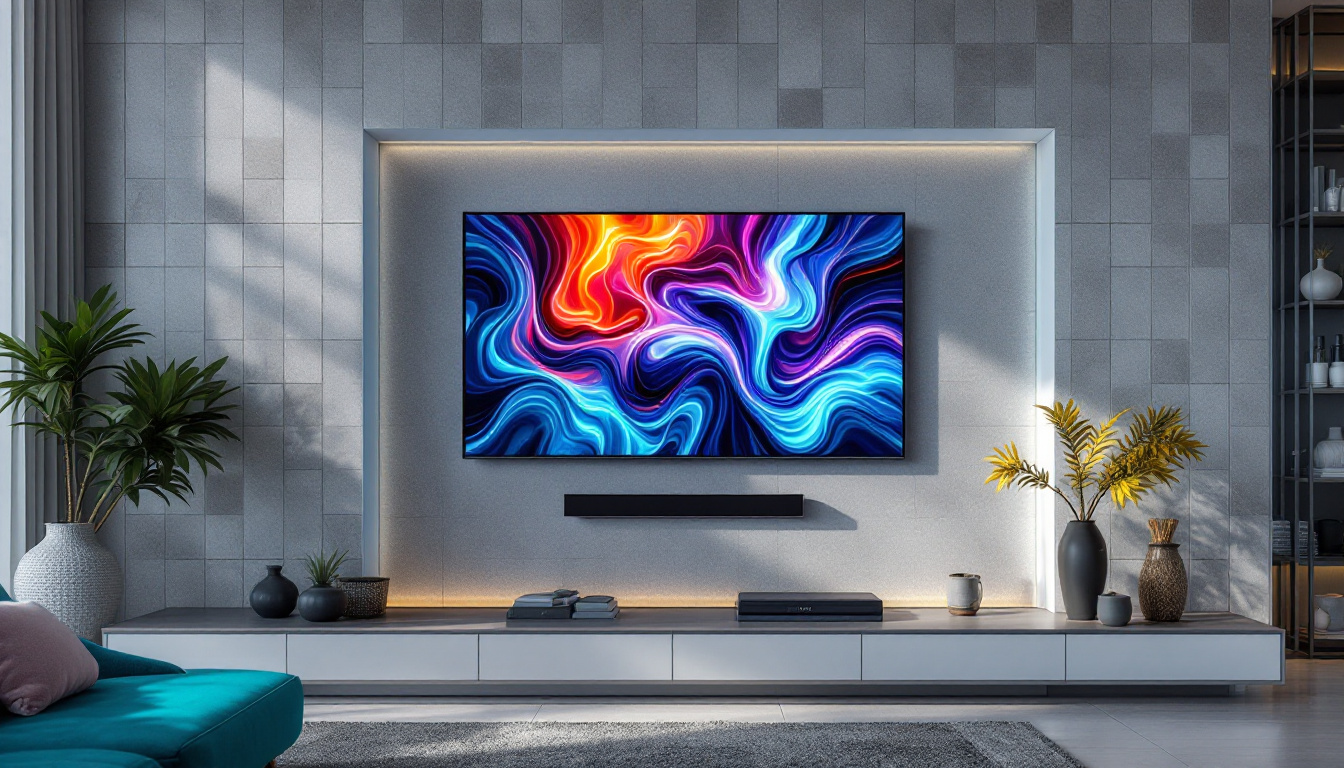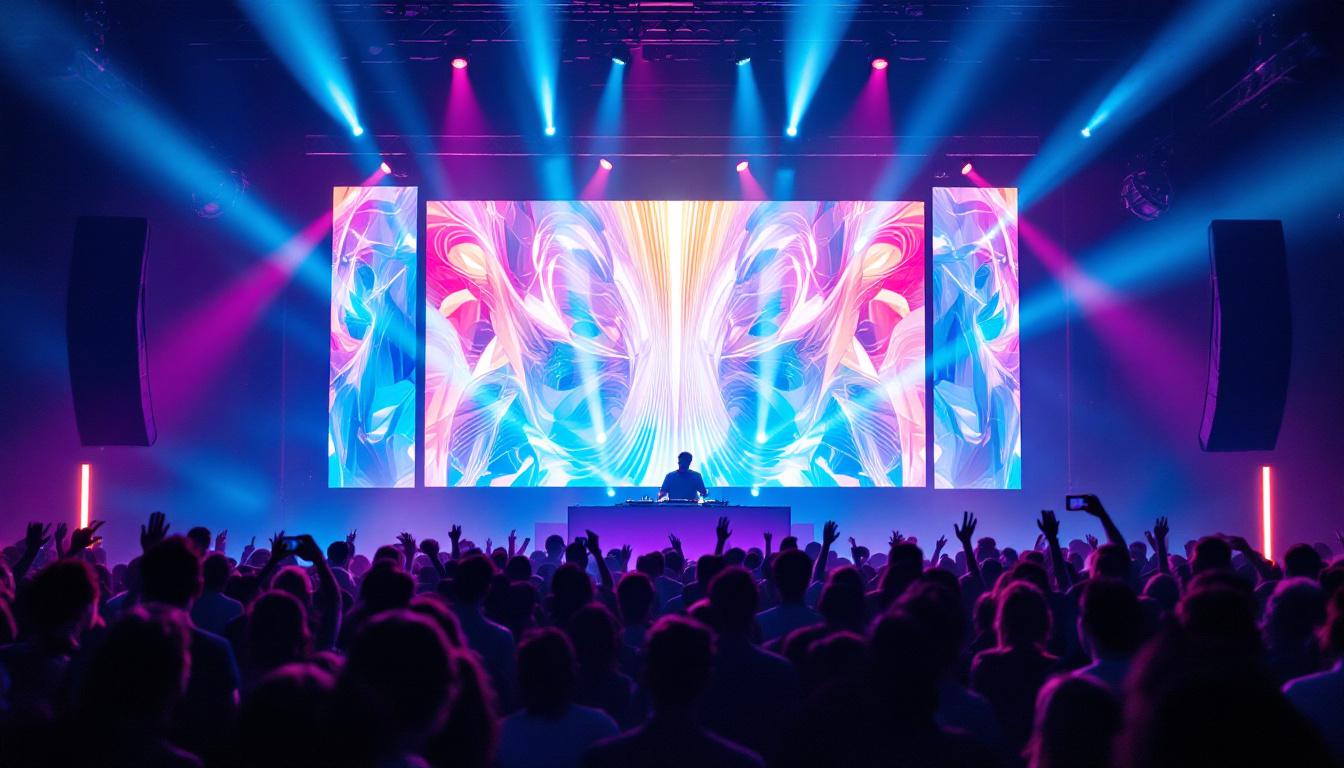In the modern world, LED displays have become ubiquitous, transforming the way we consume information and entertainment. From smartphones to billboards, LED technology has revolutionized visual communication. This article delves into the intricacies of LED displays, exploring their structure, functionality, and applications.
Understanding LED Technology
Light Emitting Diodes (LEDs) are semiconductor devices that emit light when an electric current passes through them. The technology has evolved significantly since its inception, leading to a wide array of applications. LEDs are not only energy-efficient but also offer a longer lifespan compared to traditional light sources. This remarkable longevity means that LEDs can last up to 25 times longer than incandescent bulbs, making them a cost-effective choice for both residential and commercial lighting solutions. Furthermore, their low heat emission reduces the risk of burns and fire hazards, promoting safer environments.
The Science Behind LEDs
At the core of LED technology is the principle of electroluminescence, where electrons recombine with holes in the semiconductor material, releasing energy in the form of photons. This process is highly efficient, allowing LEDs to produce bright light with minimal energy consumption. The efficiency of LEDs is measured in lumens per watt, and advancements in technology have pushed this figure to impressive levels, often exceeding 100 lumens per watt. This efficiency not only translates to lower electricity bills but also contributes to reduced greenhouse gas emissions, making LEDs an environmentally friendly choice.
Different materials and structures can be used to create LEDs of various colors. By altering the composition of the semiconductor, manufacturers can produce LEDs that emit red, green, blue, or even white light. This versatility is one of the reasons LEDs have become so popular across various industries. For instance, the RGB (Red, Green, Blue) combination allows for the creation of millions of colors, enabling dynamic lighting effects in entertainment venues and architectural lighting. Moreover, the ability to dim LEDs without color distortion enhances their appeal for mood lighting in homes and businesses alike.
Types of LED Displays
LED displays come in various forms, each tailored for specific applications. The most common types include:
- Direct View LED Displays: These displays consist of individual LEDs that create images directly. They are commonly used for large screens, such as outdoor billboards and stadium displays. The brightness and visibility of these displays make them ideal for high-traffic areas, where they can capture the attention of passersby even in bright sunlight.
- LED-backlit LCD Displays: These screens use LEDs to illuminate an LCD panel, enhancing brightness and color accuracy. They are prevalent in televisions and computer monitors. The use of LED backlighting has allowed for thinner designs and improved energy efficiency, making it possible for manufacturers to create sleek, modern devices that consume less power.
- Organic LED (OLED) Displays: OLED technology utilizes organic compounds that emit light. This allows for thinner screens and better contrast ratios, making them ideal for high-end smartphones and televisions. The self-emissive nature of OLEDs means that they can achieve true blacks, as individual pixels can be turned off completely, resulting in stunning visuals that enhance the viewing experience.
As the demand for versatile and efficient lighting solutions continues to grow, the LED market is expected to expand further. Innovations such as smart LED technology, which allows for remote control and integration with smart home systems, are paving the way for a more connected and energy-efficient future. Additionally, advancements in color-tunable LEDs are enabling users to customize their lighting environments, enhancing both functionality and aesthetics in residential and commercial spaces alike.
Advantages of LED Displays
The popularity of LED displays can be attributed to several key advantages that set them apart from traditional display technologies. Understanding these benefits can help consumers make informed decisions when choosing a display solution.
Energy Efficiency
One of the most significant advantages of LED displays is their energy efficiency. Compared to traditional incandescent bulbs or even fluorescent lights, LEDs consume significantly less power. This not only reduces electricity bills but also contributes to a lower carbon footprint, making them an environmentally friendly choice.
In commercial settings, where large displays are often in use for extended periods, the energy savings can be substantial. Businesses can benefit from lower operational costs while still delivering high-quality visuals to their audience.
Longevity and Durability
LED displays are designed to last. With a lifespan that can exceed 50,000 hours, they outlast many other display technologies. This durability is particularly advantageous in outdoor settings, where displays are exposed to harsh weather conditions.
Additionally, LEDs are more resistant to shock and vibration than traditional displays. This resilience makes them suitable for a variety of environments, from bustling city streets to industrial applications.
High Brightness and Contrast
LED displays are known for their high brightness levels, making them visible even in direct sunlight. This characteristic is crucial for outdoor advertising and public information displays, where visibility is paramount.
Moreover, the contrast ratio of LED displays is often superior to that of traditional displays. This means that colors appear more vibrant, and images are sharper, enhancing the overall viewing experience.
Applications of LED Displays
The versatility of LED technology has led to its adoption across various sectors. From advertising to healthcare, the applications of LED displays are vast and varied.
Advertising and Marketing
One of the most prominent uses of LED displays is in advertising. Billboards and digital signage utilize LED technology to capture the attention of passersby with dynamic content. The ability to change advertisements in real-time allows businesses to target specific audiences effectively.
Moreover, LED displays can be programmed to display multiple advertisements throughout the day, maximizing exposure and engagement. This flexibility has made them a preferred choice for marketers looking to enhance their outreach.
Entertainment and Events
In the entertainment industry, LED displays are used in concerts, festivals, and sporting events to create immersive experiences. Large LED screens provide audiences with clear visuals, enhancing the overall atmosphere of the event.
Additionally, LED technology is employed in stage productions, allowing for dynamic backdrops and lighting effects. The ability to create vibrant visuals in real-time adds a layer of creativity that traditional lighting cannot achieve.
Healthcare and Education
LED displays are also making strides in the healthcare and education sectors. In hospitals, LED screens are used for patient information displays, ensuring that critical information is easily accessible and visible.
In educational settings, LED displays facilitate interactive learning experiences. They can be used for presentations, collaborative projects, and even as digital whiteboards, enhancing engagement among students.
Challenges and Considerations
While LED displays offer numerous advantages, they also come with certain challenges that consumers and businesses must consider. Understanding these challenges can help in making informed decisions regarding LED technology.
Initial Cost
One of the primary concerns with LED displays is the initial cost. While prices have decreased over the years, high-quality LED displays can still be a significant investment. Businesses must weigh the upfront costs against the long-term savings in energy and maintenance.
However, it is essential to consider the total cost of ownership, which includes energy savings and durability. In many cases, the long-term benefits can outweigh the initial expenditure.
Heat Generation
LED displays generate heat during operation, which can be a concern in certain environments. Proper ventilation and cooling systems may be required to ensure optimal performance and longevity.
In outdoor settings, heat management is particularly crucial, as excessive heat can affect the display’s brightness and color accuracy. Manufacturers often incorporate cooling solutions to mitigate these issues.
Color Calibration and Consistency
Maintaining color accuracy and consistency across LED displays can be challenging, especially in large installations. Variations in brightness and color can occur, leading to an uneven viewing experience.
Regular calibration and maintenance are essential to ensure that displays perform optimally. Investing in professional calibration services can help maintain the quality of the visuals over time.
The Future of LED Displays
The future of LED displays looks promising, with ongoing advancements in technology paving the way for even more innovative applications. As the demand for high-quality visuals continues to grow, manufacturers are exploring new materials and techniques to enhance LED performance.
MicroLED Technology
One of the most exciting developments in the LED display industry is MicroLED technology. This approach utilizes tiny individual LEDs to create images, offering improved resolution and color accuracy.
MicroLED displays have the potential to revolutionize the market, providing ultra-thin screens with exceptional brightness and contrast. As production methods improve, MicroLED technology may become more accessible to consumers and businesses alike.
Integration with Smart Technology
As smart technology continues to evolve, LED displays are increasingly being integrated into smart systems. This integration allows for seamless connectivity and control, enabling users to manage displays remotely.
Smart LED displays can be programmed to change content based on real-time data, such as weather conditions or audience demographics. This adaptability enhances the effectiveness of advertising and information dissemination.
Environmental Considerations
As sustainability becomes a priority for consumers and businesses, the LED display industry is also focusing on eco-friendly practices. Manufacturers are exploring ways to reduce the environmental impact of production and disposal.
Recycling programs for old LED displays are being implemented, and energy-efficient manufacturing processes are being developed. These initiatives aim to create a more sustainable future for LED technology.
Conclusion
LED displays have transformed the landscape of visual communication, offering unparalleled advantages in energy efficiency, durability, and versatility. As technology continues to advance, the applications of LED displays are expanding, making them an integral part of various industries.
While challenges such as initial costs and heat generation exist, the long-term benefits often outweigh these concerns. With innovations like MicroLED technology and smart integration on the horizon, the future of LED displays is bright.
As consumers and businesses navigate the world of LED technology, understanding the intricacies of LED displays will empower them to make informed decisions, ultimately enhancing their visual communication strategies.
Discover LumenMatrix’s Innovative LED Display Solutions
Ready to elevate your visual communication strategy with the latest in LED display technology? Look no further than LumenMatrix, a pioneer in crafting immersive and dynamic LED display modules. Whether you need an Indoor LED Wall Display for your business, an Outdoor LED Wall Display for advertising, or any of our specialized solutions like Vehicle LED Displays, LED Sports Displays, or Custom LED Displays, LumenMatrix has you covered. Embrace the future of digital signage with our All-in-One and Transparent LED Displays, designed to captivate your audience and amplify your message. Check out LumenMatrix LED Display Solutions today and transform your space into a visual spectacle!

